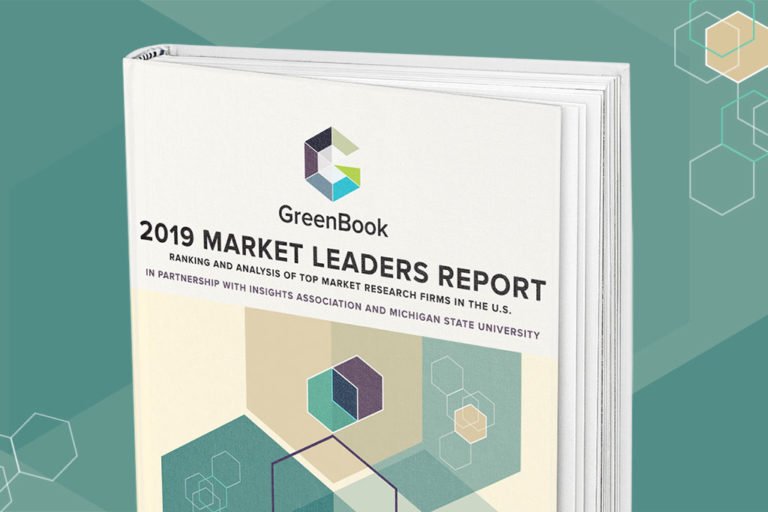Editor’s Note: This subsection is featured in the GreenBook Market Leaders Report. The GreenBook Market Leaders Report is your #1 guide to brand success in the insights industry, featuring the U.S. Top 50, and in-depth analysis from leading CEOs. In its inaugural edition, you’ll learn who is in the lead, who is rising towards the top, and where your company fits into it all.
This report has a long and useful history and its many iterations reflect the changes we have witnessed in our industry. This GreenBook Market Leaders Report continues that tradition.
I read through this document carefully making notes on interesting data points and ideas. Two hundred notes are not particularly helpful but what stood out the most was the thinking expressed in the CEO Perspective sections that represent the ideas, opportunities, and threats that will preoccupy the industry’s leaders over the next few years. There are many areas that I cannot properly highlight here—privacy, changing consumer behavior, growth in talent, among many others—but the ones I mention below are critically important and permeate through the industry in one way or another.
Allen R. DeCotiis, Chairman and CEO of Phoenix Marketing said it best “The sea-change market research companies have experienced in recent years has not been kind to the traditional, generalist research organizations”. Simplifying, possibly too much, the pain that the full-service agencies have experienced is underscored by the presence of all the different industry categories in this report. The growth in some of the full-service agencies this year would not have been possible without some of the companies represented in the technology, field service, and data and analytics categories.
Data has infiltrated every functional area of client organizations—marketing, operations, distribution, etc. And much of this information is customer information. This cultural change in client organizations has led to a hunger for answers to never before answerable questions (think about the old advertising adage about half the budget being wasted). Paul D’Aloia of LRA points to his optimism about the industry due to “our clients’ propensity to embed data and analytics into everything they do”.
Related to the above, there has been a proliferation of new(er) types of data such as social media, behavioral data, mobile information, advertising exposure information, deeper/larger qualitative data, and on and on. This availability of data along with improved analytic techniques gives us the ability to do things that we haven’t been able to do before. Antoine Harary of Edelman Intelligence notes that “With more resources at our disposal than ever before to uncover, understand and predict consumer behavior, there has truly never been a more exciting time to be a researcher. We are able to explore the nuances of historic decision-making and predict and model the future with amazing precision and accuracy.”
Technology such as automation, AI, mobile, etc. represent a future for our industry—one that is being partially realized but still with a long way to go. The change comes in different forms—how/what questions we can answer and what we do with the time that we saved. As Jim Lane of Directions Research comments, “easy projects are a thing of the past”. However, that also means that the time spent on the old easy projects now is often dedicated to more difficult projects. Dave Sackman of LRW perhaps sums it up: “The most significant industry trend … is the use of automation and AI. [It] will allow us to … provide more time for the creative, analytical, and consulting work”.
More demand for answers from clients, more capabilities, and more room for creativity. It shouldn’t be a surprise that we see solid growth.
